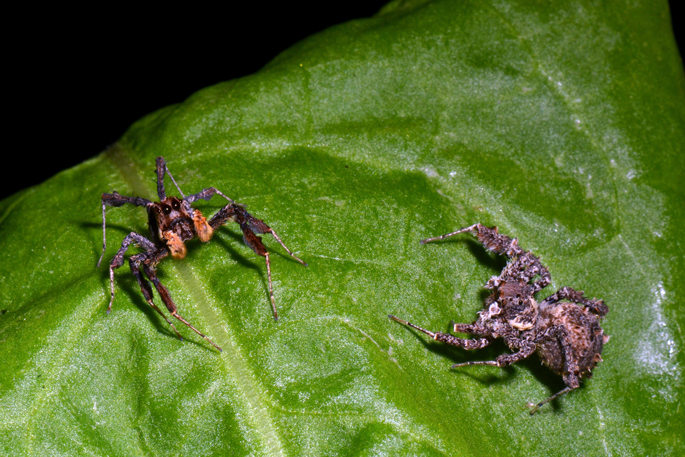A University of Canterbury animal behaviour expert is part of a global team launching pioneering research into the predatory behaviour of jumping spiders.
Professor Ximena Nelson, Associate Head of the School of Biological Sciences at Te Whare Wānanga o Waitaha | University of Canterbury, has become one of just a handful of New Zealand researchers to be awarded funding from the international Human Frontier Science Program.
Professor Nelson says the new study, which has received $1.35 million over three years from the HFSP, will explore the predatory cat-like behaviour of Portia jumping spiders, which live in tropical forests and feed on other spiders.
She says Portia spiders often take long detours in order to stalk other spiders unseen rather than confronting their prey head-on, which makes them similar to large predators.
“Portia spiders spend long periods observing their prey and scanning the environment, reminiscent of lions on the African savanna peeking over tall grass while slowly approaching an antelope for a surprise attack.”
This behaviour suggests the spiders are assessing, comparing the rewards and risks of various options, and forming a plan before taking action.
Professor Nelson says the new research is the first investigation of what factors determine this planning behaviour; whether it is good vision or the type of habitat – open and desert-like or densely complex as in a rainforest – the spiders are in.
“Notably, Portia’s vision is exceptionally good among invertebrates, with visual acuity higher than a cheetah, despite being more than 100 times smaller.”
The new research will test whether planning is possible, not only in mammals and birds with large brains, but also in small animals with tiny brains such as Portia, which has a brain with less than 1 million times fewer neurons than a human brain.
“Our findings will be significant because they could lead to the development of algorithms that enable the creation of artificial planning systems in machines with severe power constraints, such as those used on space missions. This may have implications for artificial intelligence.”
She is collaborating with researchers at Johns Hopkins University and Northwestern University in the United States, and Hubei University in China, on the project which will integrate field, lab, robotics-development, and computer-simulation work.



1 comment
A tiny brain...
Posted on 27-04-2024 12:34 | By morepork
... that is probably smarter than we imagined. There's hope for Humanity yet... I don't like spiders, but I'm teaching myself to deal with them and I'd never hurt one. I use the old "glass and piece of paper" to relocate them outside. I'm gradually learning to let them on my hand but at a certain size, I can't do it. Why is that? There's no logic to it.
Leave a Comment
You must be logged in to make a comment.